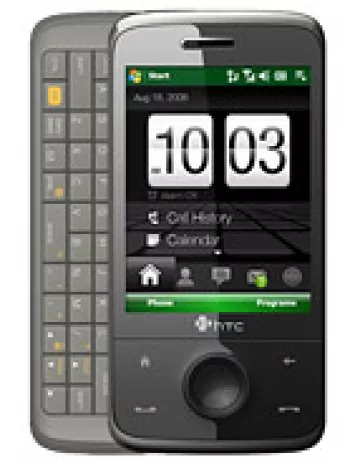
Introduction to HTC Shift
The HTC Shift was a unique device released in an era where mobile computing was rapidly evolving. Launched in 2008 following its announcement in March 2007, the HTC Shift aimed to bridge the gap between personal digital assistants (PDAs) and full-fledged laptops. This device was among the pioneers in exploring what would later be known as the netbook genre, providing users with a compact design coupled with the functionality of a computer, running on Microsoft Vista Business and SnapVUE OS.
Design and Build
The HTC Shift featured a distinctive design that stood out in its time. With dimensions of 207 x 129 x 25 mm and a weight of 800 g, it was relatively hefty, resembling a small laptop more than a typical handheld device. The design included a QWERTY keyboard, which was essential for users who needed to type extensively. The tactile feedback of the keys provided a satisfying typing experience despite the compact form factor.
The device's body was robust, made to withstand the rigors of mobile use. The front-mounted fingerprint sensor added a layer of security, a forward-thinking feature seldom found in devices of its era.
Display
The HTC Shift came equipped with a 7.0-inch TFT resistive touchscreen with a resolution of 800 x 480 pixels. This WVGA display supported 16 million colors, offering vibrant visuals though with a moderate pixel density of approximately 133 ppi. The touch functionality was decent, reflective of the technology available at the time, and it required a stylus for more precise navigation due to the resistive touchscreen technology.
Hardware and Performance
Under the hood, the HTC Shift was powered by an Intel Stealey 800 MHz CPU, which provided adequate performance for running basic desktop applications and browsing. Combined with 1GB of RAM, the device was capable of handling productivity tasks and media playback efficiently. However, multitasking might pose challenges due to the limited processing power and memory by modern standards.
Internal storage options were available in 40GB and 80GB configurations, allowing users significant space for documents, media, and applications. The microdrive storage was a precursor to more modern solid-state drives (SSDs).
Operating System and Software
The device ran on Microsoft Vista Business, providing a familiar desktop environment for users accustomed to Windows PCs. In addition to Vista, the HTC Shift employed SnapVUE, a feature enabling users to access key functions like email and calendar even when the main OS was not booted, thereby conserving battery life.
This dual-OS setup allowed users to enjoy both full desktop applications and streamlined, mobile-centric tasks without needing to power up the entire Windows system.
Connectivity and Networking
The HTC Shift offered diverse connectivity options, including GSM/HSPA technology for mobile networks, supporting 2G and 3G bands. It provided connectivity speeds up to HSPA 3.6/0.384 Mbps, standard for mobile internet access at the time.
Additional connectivity features included Wi-Fi 802.11 b/g for wireless internet access and Bluetooth 2.0 for connecting peripherals. However, the device lacked GPS and radio capabilities, somewhat limiting its functionality for location-based services and entertainment.
Camera and Multimedia
The multimedia capabilities of the HTC Shift were modest, with a single VGA camera suitable for basic photography and video recording. The device did not cater to advanced photography needs, primarily focusing on its capability as a computing device.
Sound options included stereo speakers, though it lacked a 3.5mm audio jack, which may have been considered a drawback for users wanting to use standard headphones without an adaptor.
Battery Life
Equipped with a non-removable Li-Po 2700 mAh battery, the HTC Shift balanced performance with portability. Battery life varied considerably depending on usage, particularly whether Windows Vista or SnapVUE OS was being used. While not extraordinarily robust by today's standards, the battery was sufficient for its intended use as a mobile workstation.
Conclusion
The HTC Shift stood as a testament to innovation during its time, offering a blend of laptop and mobile device features in a single compact form. While its hardware might seem dated by today's standards, the HTC Shift's influence can be seen in the evolution of netbooks and ultra-portable laptops that followed. It catered to professionals seeking mobile productivity and connectivity solutions, highlighting HTC's commitment to pioneering technology and design.
Despite its discontinuation, the HTC Shift remains a notable part of HTC's legacy, showcasing a transitional period in mobile computing that paved the way for future developments in portable devices.
Key Features of HTC Shift
- Technology support for GSM / HSPA networks.
- QWERTY keyboard for easy typing.
- 7.0 inches resistive touchscreen display with 16M colors.
- Operates on Microsoft Vista Business and SnapVUE OS.
- Intel Stealey 800MHz CPU for processing tasks.
- Expandable memory via SDIO card slot.
- Loud stereo speakers for enhanced sound.
- Connectivity options include Wi-Fi and Bluetooth 2.0.
- Front-mounted fingerprint sensor for security.
- Non-removable Li-Po 2700 mAh battery offering extended use.
HTC Shift Main Disadvantages
- Heavy weight at 800 g (1.76 lb) which might be cumbersome for portability.
- Low screen-to-body ratio of approximately 52.2%.
- Relatively low display resolution at 800 x 480 pixels resulting in 133 ppi density.
- Uses outdated Microsoft Vista Business and SnapVUE Operating Systems.
- Powered by an older Intel Stealey 800MHz CPU.
- Lacks modern connectivity options, such as GPS and NFC.
- No 3.5mm audio jack for conventional headphone use.
- No built-in radio feature.
- Limited internal memory options and reliance on microdrive, which can be slower than modern SSDs.
- Basic VGA rear camera, which might not meet current photo quality standards.
- Non-removable battery which can complicate replacements.
- Discontinued, affecting the availability of parts and support.

View Also
More Phones
All Rights Reserved +14266 Phones © Mobilawy 2025

























